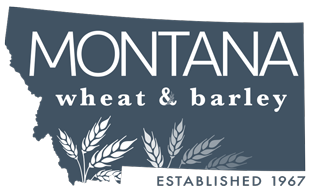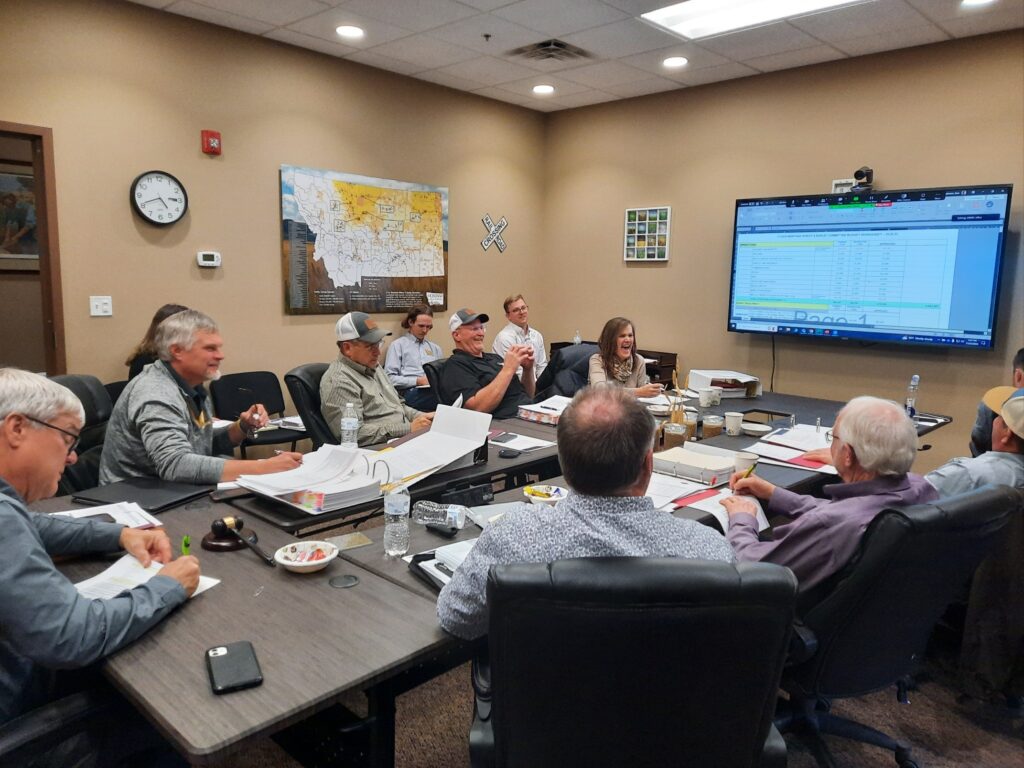The Montana Wheat & Barley Committee (MWBC) chose to fund 27 applications for the 2024 research cycle. Awards totaled $2,234,327, a 33 percent increase over the 2023 budget and the largest annual amount invested in the history of MWBC. Projects were a wide range such as screening for fusarium head blight or durum varietal improvement.
MWBC Chair Terry Angvick, Plentywood, was pleased with the incoming research proposals to the committee. “Our investment in quality research is critical to improving the wheat and barley industry which in turn raises the bar for Montana’s economy,” Angvick said. “As representatives of Montana producers, the seven directors evaluate proposals submitted each October and then select those which promise the most opportunity.”
The 2024 increase in available funds reflected two changing conditions in Montana’s grain business. In 2023, most areas of the state had ample moisture. “That meant more bushels in the bin generating increased checkoff dollars,” said Angvick. “We also had an increase in the assessment per bushel for wheat and barley, and that has also helped to increase dollars toward research funding.” Angvick noted that each year’s research funding helps support personnel such as graduate students, project work at Montana Agricultural Experiment Stations (MAES) and much more.
At the southern tip of the Golden Triangle (Montana’s heaviest grain-producing region from Great Falls to Cut Bank to Malta), Charlie Bumgarner of Great Falls said that challenges like wheat stem sawfly and drought tolerance are research musts during grant discussions.
“I’ve been able to serve on this committee since 2018 and it is always so hopeful to read through the submissions of ‘what could be’,” Bumgarner said. “Some items remain on our needs list every year that we must continue to invest in, such as variety improvement. As an example, many would not have survived the drought of ’21-’22 if we didn’t have the level of drought tolerance in our varieties today.” Bumgarner added that it is critical for research institutions to stay on top of serious issues, such as sawfly, as those problems can threaten the livelihood of farming.
An awards summary is listed here; entire information will be available in the coming week at montanawbc.com/research:
| Project Title | Awardee |
| Spring Wheat Breeding & Genetics | MSU: J. Cook |
| On-Farm Cereal Variety & Advanced Breeding Line Testing | MAES |
| Developing Genetically Improved Winter Wheat Cultivars | MSU: S. Mondal |
| IPM of Wheat Stem Sawfly | MSU: D. Weaver |
| Improved Spring Barley Varieties | MSU: MSU: J. Sherman |
| Durum Varietal Improvement & Quality Testing | MSU: M. Giroux |
| New Plot Combine for Spring Wheat Breeding Program | MSU: J. Cook |
| Small Plot Combine for Barley Breeding & Foundation Seed with Matching Funds | MSU: J. Sherman |
| Developing Uniform Solid Stem Wheat Varieties for Wheat Stem Sawfly Resistance | MSU: L. Mendu |
| Improved Winter Barley Varieties | MSU: J. Sherman |
| Varietal Education to Advance Best Practices | MSU: M. Giroux |
| 2024 Improved Quality of Montana Hard Red & Hard White Wheat | MSU: D. Nash |
| Developing Heat Stress Tolerant Wheat & Barley Lines | MSU: V. Mendu |
| Host Induced Gene Silencing (HIGS) Mediated Wheat Stem Sawfly | MSU: V. Mendu |
| Advance Disease Resistance in Montana’s Wheat | MSU: A. Dyer |
| Glutopeak Equipment for CQL with Matching Funds | MSU. D. Nash |
| Mapping & Precision Weed Management in Fallow | MSU: L. Shergill |
| Towing Pickup for Off-Station Variety Testing Research with Matching Funds | MSU: P. Lamb |
| Wheat Heat Stress Resiliency Discovery Through Genomics | MSU: J. Lachowiec |
| Variety Specific Spectral Responses to Wheat Stem Sawfly Vs. Wireworm Pest Pressure | MSU: T. Oppedisano |
| Management of Herbicide Resistant Weeds Including Wild Oats, Kochia & Green Foxtail | MSU: T. Siepel |
| 2024 Montana Barley Crop Quality Survey & Report | MSU: J. Sherman |
| Screening for Fusarium Head Blight (FHB) Resistance in Montana Durum | MSU: F. Crutcher |
| Exploration of Genetic Resources for Enhanced WSS Resistance in Montana’s Winter Wheat | MSU: G. Gaur |
| Agricultural Data Accessibility | MSU: J. Vetch |
| Soil Carbon Accrual in Progressive Montana Crop Rotations | MSU: P. Miller |
| Benefits of Rotation on Wheat & on Crops Following Wheat | MSU: P. Carr |
MWBC received 35 submissions and chose to fund projects from 20 faculty (some with multiple projects) for a total of 27 total projects. To date, MWBC has funded $37.7 million om research since its inception in 1967. The second highest research funding year on record was 2014 at $2.23 million largely due to a $500,000 investment in the Winifred Asbjornson Plant Sciences Chair. Checkoff dollars are collected for wheat (2.5 cents/bushel) and barley (3.5 cents per CWT) and are refundable should a producer choose that option.
Applications typically are submitted each fall during a 30-day window. Research institutions interested in obtaining funding from MWBC can expect the 2025 awards to open around September 13, 2024. Committee members welcome new or returning applicants and encourage prospects to inquire about the process. For more information regarding the grant cycle, email Tammy Suek at wbc@mt.gov or call 406-761-7732.

